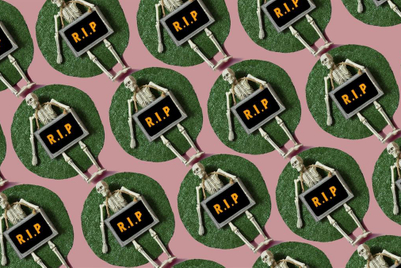
Allow me to make a prediction. As the economy continues to be challenged and sweeping layoffs at tech and media companies such as Twitter, Meta and Amazon start shredding internal marketing teams, the often misunderstood hybrid creative model will enjoy a renaissance.
But before these creative production hybrids build momentum they must navigate potholes that have always been in the road.
Historically, agencies don’t "make.” They are architects, not builders. As our industry began to shift to social and digital media, the sheer quantity of content necessary to feed the beast compelled brands to shun the architects and go directly to the builders.
Most of these builders happened to be production and design companies that could execute quick turnarounds, compared to the schedules and overhead associated with traditional agencies and networks.
Some brands went a step further by hiring talent and creating in-house hybrids – think Intel Global Production Labs. Feeling the heat, creative agencies launched their own “maker” capabilities – think Steelhead at Deutsch and Hecho Studios at 72andSunny. Unfortunately, the architects and builders coexisted very uneasily under one roof and eventually many internal shops spun out into separate entities focused entirely on production.
Formulation and concentration
There is a huge cultural difference between production talent and agency talent. When you put teams from both worlds together, there are barriers, communication and process breakdowns. We’re all in advertising, so we should all be getting along – but like the European Union, we’re all speaking different languages.
Typically creatives operate from a condition of what I call “Formulation,” which is basically an operating system (think PC and Mac). The Formulation OS is based on open-endedness, flexibility, ideation, exploration, collaboration and contributions by lots of stakeholders. It is a softer, malleable, less defined space.
The production universe operates within an OS that I call “Concentration,” which is all about making decisions, time, meeting deadlines and budgets and making ideas real. In a state of Concentration, everything is more concrete; it’s the manufacturing line. In theory, if you’re manufacturing something it is hard if not impossible to go back to the drawing board.
Clients want both Formulation and Concentration. They want creative development, production and flexibility. They hire agencies for Formulation and agencies hire production companies for Concentration and typically they do not all fit together.
Hybrids of the past started out with grandiose plans for conquering the dichotomy between the two, but ultimately ended up retreating back into their respective corners. I believe it’s because they did not have third heads.
Enter the three-headed llama
Truly successful hybrids today need to birth a three-headed beast that boasts a right brain and a left brain, and most importantly, a middle brain. I like to think of this animal as a llama, simply because they are furry, cuddly and that is the name we threw out in a meeting. But hey, that’s my thing.
Call it what you will, the three-headed llama is a brain trust all under one roof. The middle brain should be able to:
- Combine the Formulative mindset of a creative with the Concentrated aspect of a producer and the Collaborative thinking of an executive producer/brand partner.
- Work with both production and creative to enable teams to cooperate in a way that allows for no separation between production and creative.
- Allow producers to get closer to the creative side, creatives to get closer to the production side and clients to get closer to the work, all under one roof.
- Interface with the client with a focus on producing the best work vs. hand-holding.
Yes, the third head is similar to an account person at an agency. But unlike account people, they know production. They are not the necessary evil that is pushed to the side by creative teams. They’re not minding the client and saying whatever needs to be said to keep them happy. They are part of a tripartite structure that is focused on the work.
The third head is the way a creative company avoids the danger of stepping backwards, splitting off into a separate entity once again that is either production or creative.
Ultimately, we can never forget that it’s always about removing barriers to doing the best work possible.
Seth Epstein is an Emmy Award winning director and founder of Los York.



.jpg&h=334&w=500&q=100&v=20250320&c=1)


.jpg&h=334&w=500&q=100&v=20250320&c=1)
.jpg&h=334&w=500&q=100&v=20250320&c=1)
.jpeg&h=334&w=500&q=100&v=20250320&c=1)



.jpg&h=334&w=500&q=100&v=20250320&c=1)




.jpg&h=268&w=401&q=100&v=20250320&c=1)
.jpg&h=268&w=401&q=100&v=20250320&c=1)

.jpg&h=268&w=401&q=100&v=20250320&c=1)